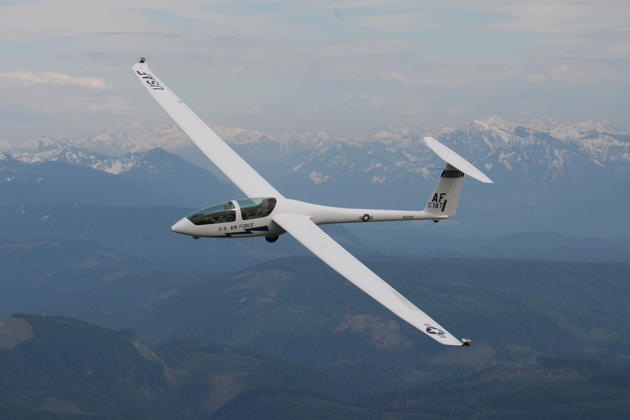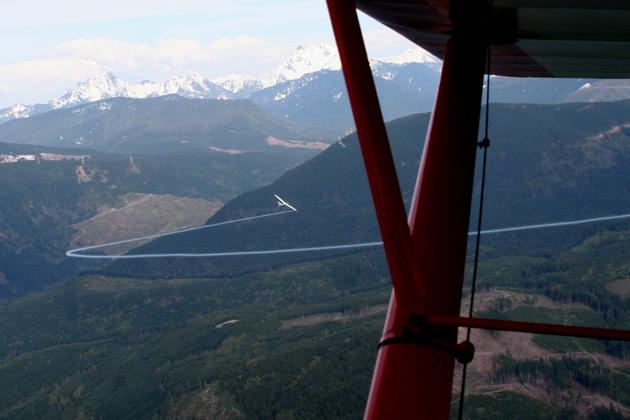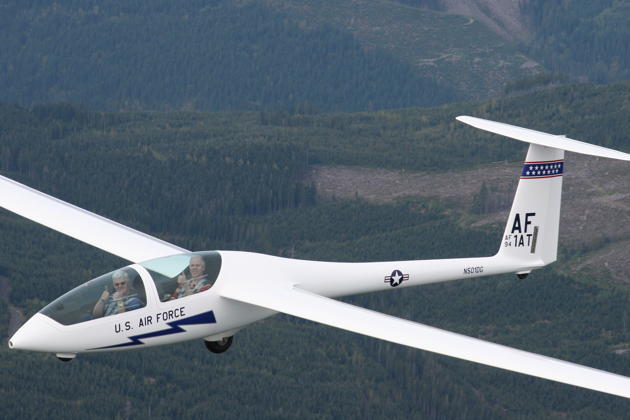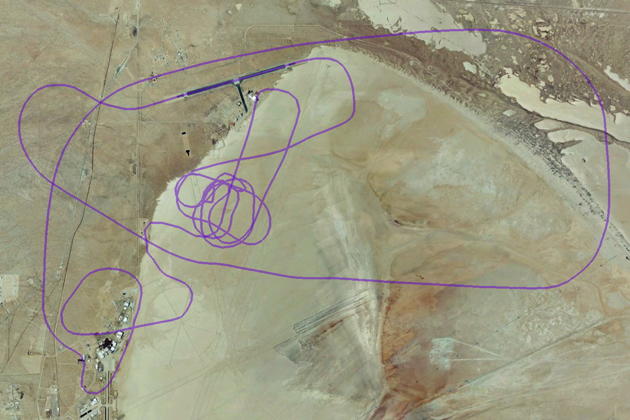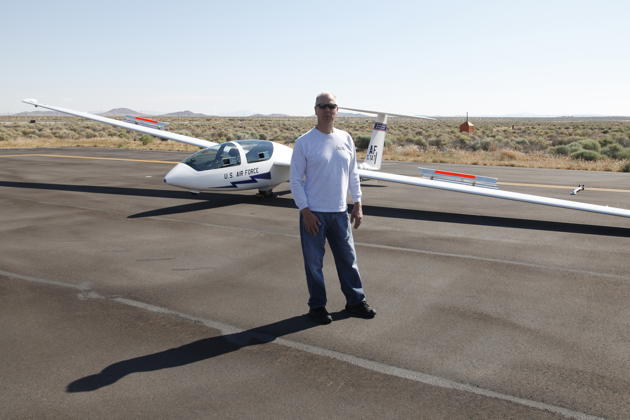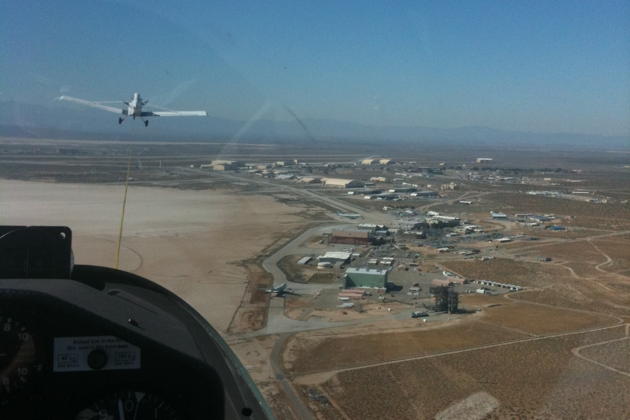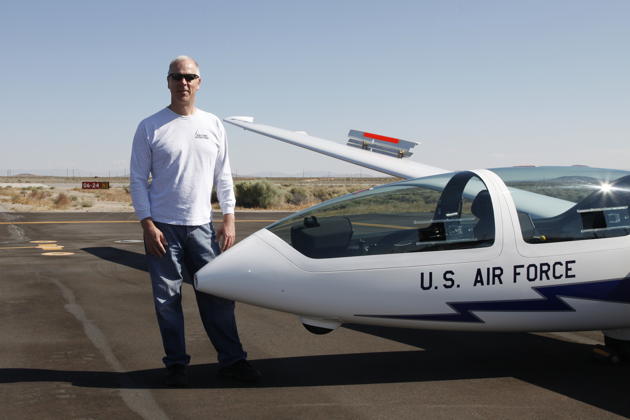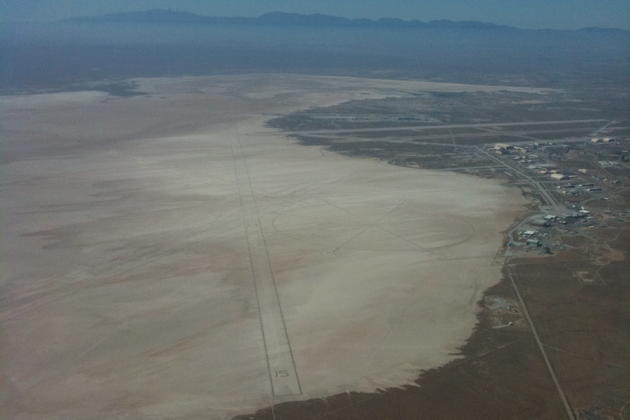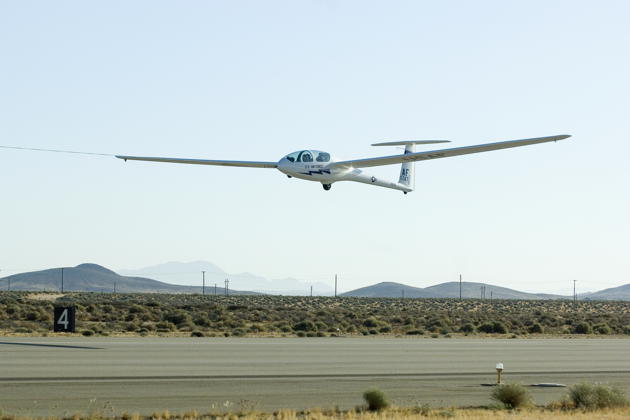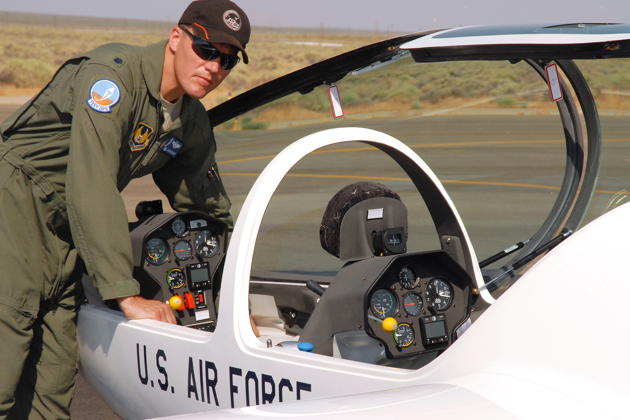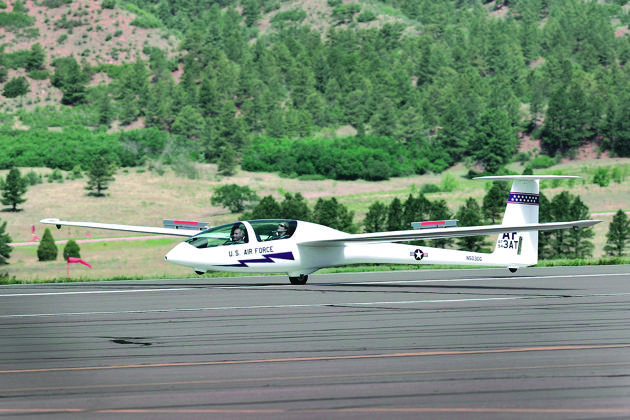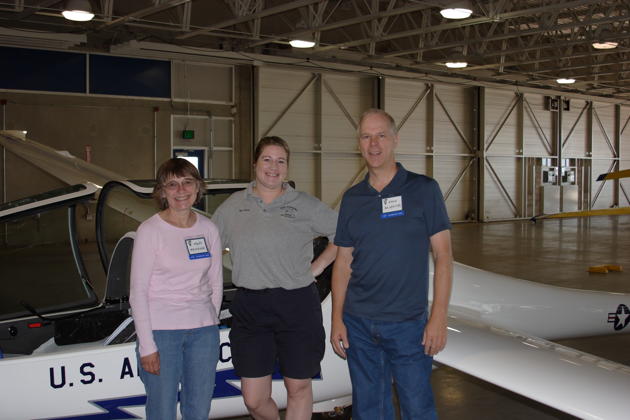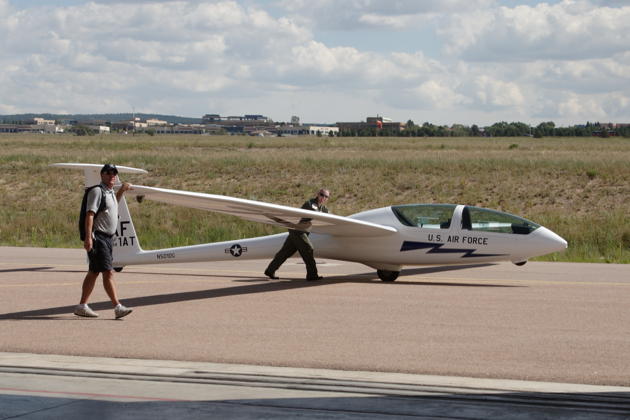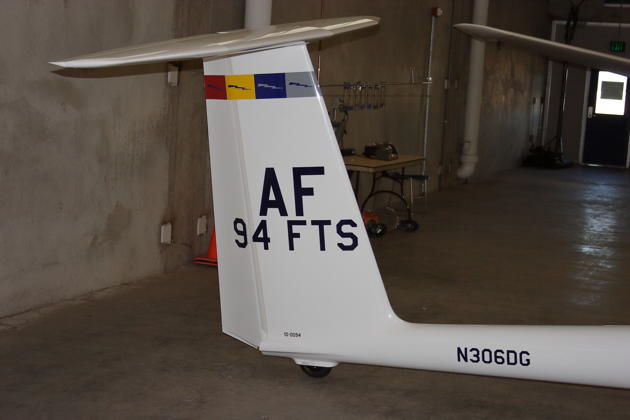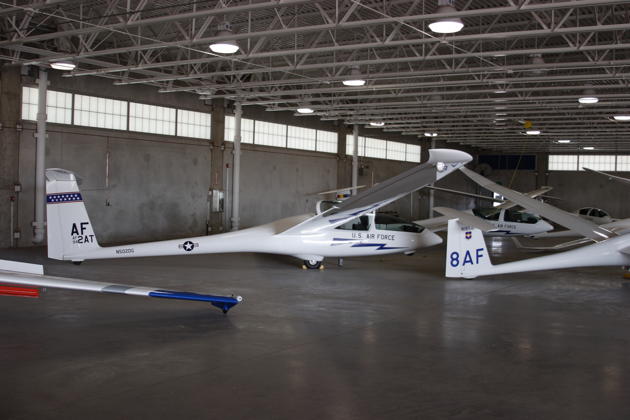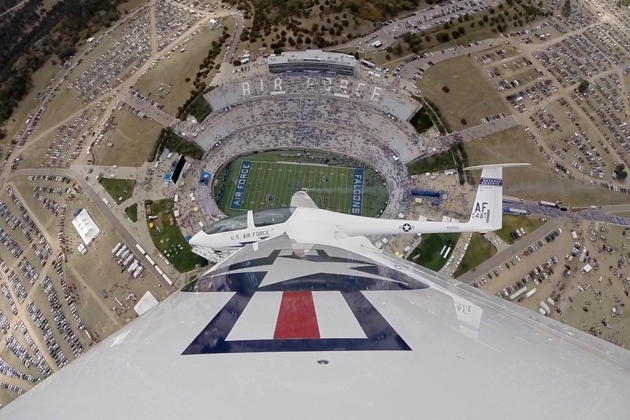FlightLog Archive
∟Aircraft Flown
Flying the USAF Academy DG-1001 - Jun 2011
The U.S. Air Force Academy has a long history of glider training, which has evolved into a major 'soar for all' program that aims to give soaring experience to all cadets. The primary USAF Academy trainer had been the Schweizer 2-33 in the 70's and 80's, with the Blanik L-23 serving as the primary two-seat trainer since the 1990s. In 2009, the AF Academy embarked on a glider replacement program, and conducted a detailed evaluation of all gliders available on the market. In Jan 2011, the Academy chose the DG-1001 as its replacement glider, ordering 5 Aerobatic Trainers, in the DG-1001 Club configuration, and increased the order with 14 more DG-1001s in March 2011, for a total of 19 DG-1001s.
The Academy ordered their entire 19 aircraft fleet from DG-Flugezbau in Germany, through their Western U.S. distributor, Chris Klix, of Pacific AeroSport from Arlington, WA. Chris and I are both members of Evergreen Soaring, and as Chris was working through his proposal, he approached me with the possibility of providing transition DG-1001 training to the Air Force pilots if he won the competition. I have been lucky enough to have flown in six different DG-1000s/1001s since 2003, and gladly accepted his offer.
Once Chris was notified that the DG-1001 had been selected, I started working on the transition syllabus, with additional emphasis on the unique items in the USAF Academy configuration. These unique items included a G-logger system and 406 ELT for all 19 aircraft, and a wingtip smoke generating system for the first 5 DG-1001s. The Academy sailplanes are all to be delivered in the DG-1001 Club configuration, with fixed landing gear and 18-meter wingtips only. I delivered my transition training syllabus final to Chris in May, and he provided it to the USAF, along with a flight training plan detailing the required sorties.
Chris and I began working on details for the transition training, and also began working with Jason Stephens, from Estrella, AZ. Jason, a three-time US National Sailplane Aerobatic champion, was contracted to provide detailed aerobatic instruction after I completed the first week of transition training. The Air Force settled on Edwards AFB, CA as the location for the training, and began to line up the instructor cadre from Edwards and the Colorado Springs AF Academy instructor team.
The first USAFA DG-1001, N501DG, arrived in Arlington, WA in early May, and Chris prepared it for FAA inspection. After getting its airworthiness certificate early on 20 May, Chris and I flew it for two enjoyable checkout flights. I was able to fly some formation with Keith McLean in the Super Cub towplane, while Tim Kinney from Pacific AeroSport took photos with my camera in the Cub's backseat. Chris and I ignited two smoke grenades and checked out the operation of the Academy's smoke generating system, which was quite impressive, especially looking down on the white trail against the dark green trees of the Cascade foothills. The aircraft assembly and flight performance were classic DG, smooth and responsive.
In early June, Chris Klix trailered USAFA DG-1001 #1 to northern California, to continue acceptance with the USAF at Edwards AFB. I arrived in Mojave on Sunday, and led a full morning of DG-1001 ground transition training at the 445th Flight Test Squadron on Monday morning. Chris had hoped to fly the Air Force acceptance flight before I arrived, but the AF decided to accomplish that flight with the test squadron commander and me instead. I had eight highly experienced 'students', three sailplane instructors from the USAF Academy, three test pilots from the 445th Flight Test squadron, and two instructors from the Air Education and Training Command (AETC). The USAF Academy instructors were Mark 'Matti' Matticola, Maj Maggie Grafe and L/C Noel 'Hank' Williams. The USAF Test pilots were L/C Jason 'Bernie' Schott, the 445th Squadron commander, Maj Andrew 'Doc' Martin and Maj Tony 'Mamba' Massett. The two AETC instructors were Maj Kent Currie and Maj Ryan Venhuizen.
After the ground training, we shuttled to the runway at Edwards North Base, where we were basically given the runway for the week, with access to a large portion of the airspace overhead, including the airspace over the northern half of the Edwards dry lake bed all the way north to Highway 58. Chris and I assembled N501DG, giving a thorough introduction to the entire pilot group. The first order of business was to conduct the USAF acceptance flight, which consisted of the entire suite of maneuvers described in the transition syllabus, plus a few test points near the Vne (never exceed) speed of 146 knots. L/C Jason Schott and I chuted up, with Jason in the front seat. We positioned in the center of North Base's runway 24 behind the contracted Pawnee towplane from Crystal Soaring, and launched into the clear but gusty desert sky. Jason and I towed to 7300 ft (5000 ft AGL), boxed the wake, checked slack rope, then proceeded to fly multiple stalls, slips, steep turns, pre-spin and recovery parameters, and pressed to check out Vne controllability, accelerating to 136 knots with no issues.
After a smooth approach and landing on runway 24, Jason felt pleased and signed off the acceptance paperwork for the first USAF DG-1001. Although the day was waning and the winds were getting stronger, I was able to fly three more checkout sorties before we called it a day, and de-rigged to provide more ground instruction to the test cadre.
Tuesday morning dawned clear but gusty in Mojave, but by the time Chris and I arrived in North Base early at 6:15AM, the conditions were calm, allowing me to start early with multiple checkout flights, completing all three Academy instructors by early afternoon. One of the checkout flights reviewed low altitude rope break procedures, and we disconnected at 300 ft with one instructor, 200 ft with the next, then released at 150 ft with Matti Matticola, definitely eye-opening for all the instructors/students, and me! The two AETC instructors had limited soaring experience, so I flew the takeoffs and most of the approaches and landings for them, while they exercised all the transition maneuvers at altitude. As the day wound down, Jason Schott came out for his simulated rope break flight. Once again working to explore the edges of the envelope, Jason disconnected from tow at 140 ft and executed a flawless turn back to land on runway 06, with impressive views of desert and scrub bushes looking down the right wing. At the end of the day, I had flown 15 flights, allowing complete checkout in the DG-1001 of seven of the eight planned instructor pilots.
On Wednesday, the only pilot remaining was Maj Tony 'Mamba' Massett from the 445th Test Squadron. We added some small video cameras between the front and back cockpit, along with LED lights to illuminate the instrument panel for post-flight data debrief. Mamba and I flew our planned three checkout sorties, and since we were the last ones to fly, spent an hour thermaling and enjoying the great views overhead the Edwards desert environment. By 1:00 Wednesday I had completed all 22 acceptance and checkout flights, and helped the ground crew de-rig for storage for the remainder of the week. Jason Stephens arrived the following Monday, and conducted a very successful aerobatic checkout of the Academy and Flight Test squadron instructors, completing two very successful weeks of transition and aerobatic training.
After our two weeks of checkouts, the 445th Test squadron continued test flights, including spin checks and crosswind checkouts, and published a public video on their efforts.
Chris - it was a pleasure to become involved in this great exercise, allowing me to fly the first US flights in this brand new edition to the AF Academy's fleet, while also exploring the historic environment and airspace at Edwards AFB. It was also a pleasure to visit Colorado in September 2011 for an AF Academy reunion, where the Academy instructors gave me and Mary a tour of their growing DG-1001 (TG-16A) fleet, with six aircraft already in place, and more of the nineteen on the way.
Epilog
In 2013, the Academy produced another public video showing off the DG-1001 sailplanes in training use. It looks like they're doing well!
 KASPRZYK
KASPRZYK